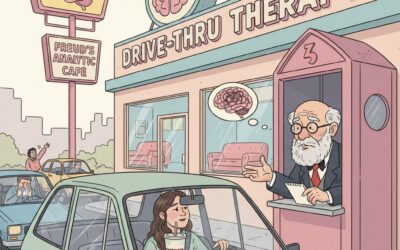A Clinical Guide to Transformative Self-Talk

Worksheet for Clinical Affirmations
Therapeutic affirmations have emerged as a powerful tool in the clinical setting, offering a pathway to reshape negative thought patterns, build resilience, and promote emotional well-being. As mental health professionals, it is essential to understand the core principles and effective implementation strategies to harness the full potential of affirmations in our work with clients.
Core Principles for Therapeutic Affirmations
- Personal Relevance
- Affirmations must be carefully crafted to align with the client’s specific challenges, therapy goals, and personal values. By using language that resonates with the individual, we create a foundation for belief and receptivity to change.
- Clinical Framework
- Starting with smaller, believable statements, we gradually progress to more ambitious affirmations as the client’s readiness for change evolves. By tracking beliefs and emotional responses, we can fine-tune the affirmations to maximize their impact.
- Implementation Structure
- The implementation of therapeutic affirmations follows a structured approach, beginning with a thorough assessment phase, followed by the development and integration phases.
Assessment Phase
- Identify negative thought patterns
- Map core beliefs
- Determine readiness for change
- Set realistic expectations
Development Phase
- Create baseline affirmations
- Test emotional resonance
- Refine language and delivery
- Establish practice routine
Integration Phase
- Morning/evening practice
- Crisis response tools
- Progress tracking
- Adjustment protocols
Clinical Applications Therapeutic affirmations find wide-ranging clinical applications, from anxiety management and depression treatment to trauma recovery and self-esteem building. By tailoring affirmations to specific needs, we empower clients to challenge negative self-talk and embrace a more positive narrative.
Anxiety Management
- “I handle uncertainty with growing confidence”
- “Each breath brings me closer to calm”
- “I am safe in this moment”
Depression Treatment
- “I acknowledge small victories”
- “My feelings are valid and temporary”
- “I choose self-compassion today”
Trauma Recovery
- “I am present in this moment”
- “My past experiences inform but don’t define me”
- “I trust my journey of healing”
Self-Esteem Building
- “I accept myself as I am right now”
- “My worth is inherent”
- “I deserve care and respect”
Implementation Guidelines For Therapists
- Introduce affirmations gradually
- Help clients personalize statements
- Monitor effectiveness
- Adjust based on feedback
- Document progress
For Clients
- Start with 2-3 affirmations
- Practice at set times
- Record emotional responses
- Discuss challenges in session
- Celebrate progress
Progress Evaluation Tracking metrics such as belief level, emotional response, usage frequency, and situational effectiveness provides valuable insights into the impact of affirmations. However, therapists must also be vigilant for red flags, such as increased resistance, emotional distress, or avoidance patterns, which may indicate the need for adjustment or additional support.
Metrics to Track
- Belief level (1-10 scale)
- Emotional response
- Usage frequency
- Situational effectiveness
- Impact on behavior
Red Flags
- Resistance increase
- Emotional distress
- Avoidance patterns
- Decreased engagement
- Cognitive dissonance
Advanced Integration Combining with Other Techniques
- Mindfulness practices
- Cognitive restructuring
- Behavioral activation
- Exposure therapy
- Narrative therapy
Crisis Response Protocol
- Identify triggers
- Select appropriate affirmations
- Practice grounding techniques
- Apply coping strategies
- Seek support when needed
Documentation Templates Daily Practice Log
Date:
Morning Affirmation:
Belief Level (1-10):
Emotional Response:
Evening Review:
Challenges:
Successes:Weekly Progress Review
Week of:
Most Effective Affirmations:
Challenging Situations:
Adaptation Needs:
Progress Notes:
Next Week Goals:Research-Based Validation The efficacy of therapeutic affirmations is supported by a growing body of research, including studies on neuroplasticity, self-perception, behavioral modification, stress reduction, and emotional regulation.
Key Studies Support
- Neuroplasticity evidence
- Self-perception impact
- Behavioral modification
- Stress reduction
- Emotional regulation
Outcome Measures
- Symptom reduction
- Belief system changes
- Behavioral improvements
- Quality of life impact
- Relationship enhancement
Ethical Considerations As mental health professionals, it is our ethical responsibility to uphold guidelines such as respecting client autonomy, maintaining therapeutic boundaries, avoiding toxic positivity, acknowledging limitations, and conducting regular effectiveness reviews.
Guidelines
- Respect client autonomy
- Maintain therapeutic boundaries
- Avoid toxic positivity
- Acknowledge limitations
- Regular effectiveness review
Contraindications While affirmations can be powerful tools, it is crucial to recognize contraindications, such as severe mental illness without stabilization, active crisis states, or cognitive impairments that may limit their effectiveness.
- Severe mental illness without stabilization
- Active crisis states
- Lack of basic safety/security
- Cognitive impairment
- Resistance to method
Therapeutic affirmations offer a transformative approach to mental health treatment, empowering clients to reshape their inner narratives and cultivate resilience. By understanding the core principles, implementing structured approaches, and monitoring progress, therapists can effectively integrate affirmations into their clinical practice. Through personalized, clinically-grounded affirmations, we can support our clients in their journey towards emotional well-being and personal growth.


























0 Comments